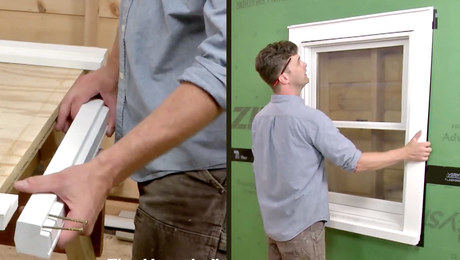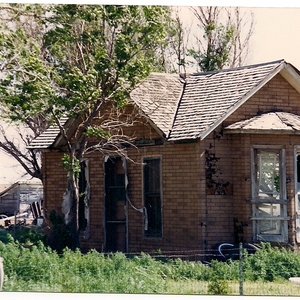Many opinons out there about how a toilet flange should be installed. Should the flange be level with finished floor ; or shouldit sit on the finnished floor (tile in this case)
Discussion Forum
Discussion Forum
Up Next
Video Shorts
Featured Story

Few people understand it. Nobody agrees what it is, how to learn about it, or who's responsible for it. It has never been more important
Featured Video
How to Install Exterior Window TrimHighlights
"I have learned so much thanks to the searchable articles on the FHB website. I can confidently say that I expect to be a life-long subscriber." - M.K.

















Replies
Hey NK,
I am surprised to hear you say there are many opinions out there about how to install a toilet flange. As far as I knew, there was only one right way that everyone had accepted. That is the flange should sit down tight on the finish floor. I am not a plumber, but have never seen or heard of any other correct way to install a flange. Often in remodels we see flanges that end up flush with the finish floor and we do whatever is needed to fix this so the flange is on top of the finish. Maybe one could argue in favor of a different method, but I do believe that method would be considered extremely unorthodox to say the least.
There's no real problem with putting the flange on the underlayment and then fitting vinyl tile or sheet vinyl around it. The loss of height is minimal. What's to be avoided is laying ceramic tile around the flange, as that "buries" it.
toilet flange
I read many forums about where a T flange should be set. My opinion, based on my research, the flange should be on the finnished floor.
I volunteer for Habitat for Humanity. I see tile placed so that it flush with the flange. This is why I got interested in this topic. I am sure we can all agree, the main goal is a stable, leak free toilet installation.
Any time the flange is at or below the finished surface some sort of extra-thick gasket should be used.
But a far bigger problem than flange height on tile is getting the toilet to lay flat, with no rocking. Properly installed, the toilet should not rock at all. I've resorted to such tricks as grinding down the tile face where it interfers with the toilet base (using transfer paper to mark the problem areas).
always on top.......
There is a very informative article on this exact subject in FHb magazine # 254 titled " Trouble - free Toilets ''. When a toilet is set on a properly installed flange, the bowls horn will extend below the top of the flange - this protects the bowl gasket from water flow erosion and probing by a snake or auger. The horn can also help with alignment - the funnel shape of the closet flange will guide the bowl torwards the center of the drain. I don't believe in, trust, or use thick gaskets - a bowl gasket should never come in contact with water unless there is a back up in the drain pipe that the toilet is connected to...........
Sometimes you don't have a choice. But a gasket with a molded-in horn assures continuity between the toilet's horn and the entrance to the drain pipe. (Just don't use one on a flange that's too high as the plastic of the horn will prevent the toilet from sitting flat.)
toilet flange
Fernco brand wax free toilet seal.
suitable for all circumstances, low flange, flush flange,or raised flange.
No need to worry about the wax seal failing or not fitting, available for 3" or 4"
and there's a 3 1/2" for 4" pipe with an internal mounting
flange. Check your supply house, I'll bet the're readily available.
I've used them for about 15 yrs.- never had a problem with them.
They run about $6.00- $8.00 if I recall
Well worth the price!
Geoff